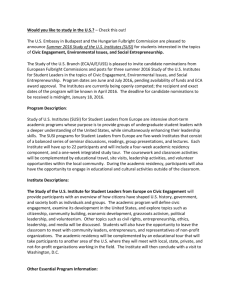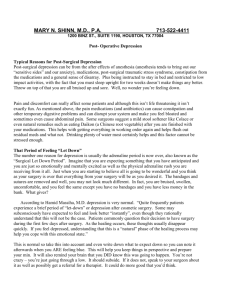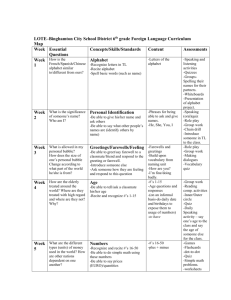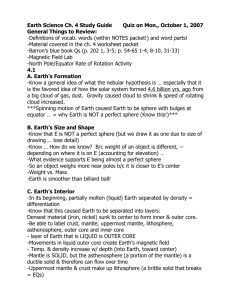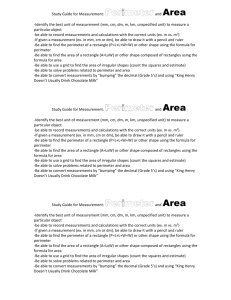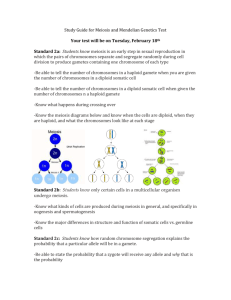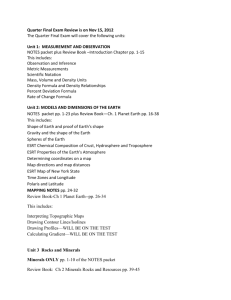Lab Final Exam Review Sheet
advertisement
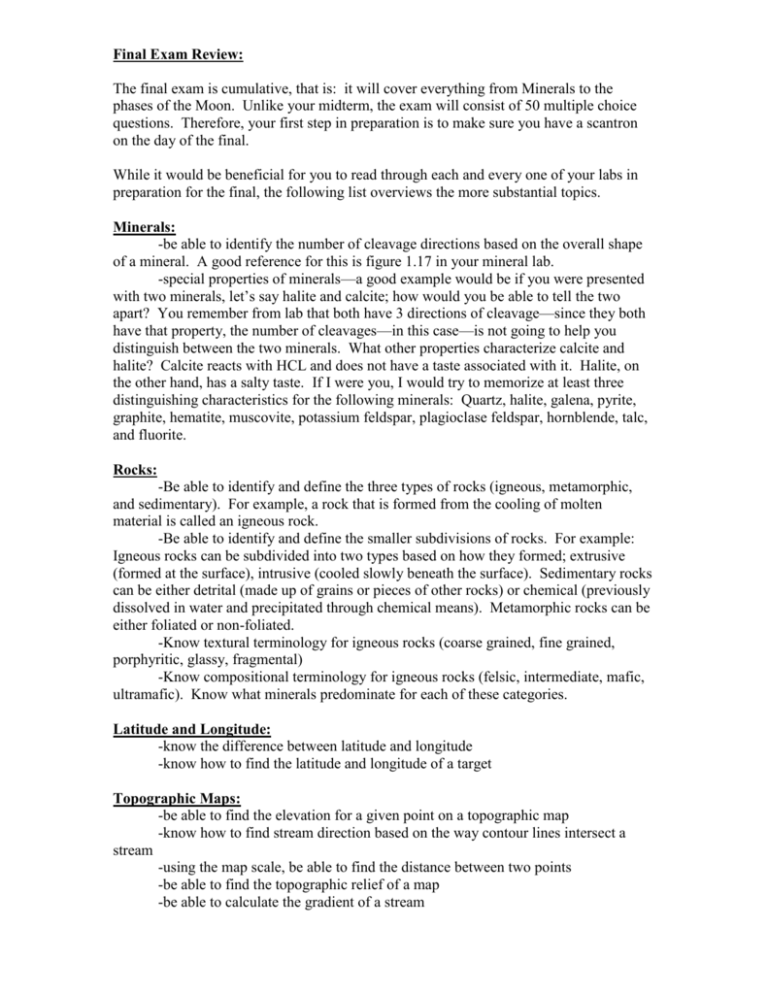
Final Exam Review: The final exam is cumulative, that is: it will cover everything from Minerals to the phases of the Moon. Unlike your midterm, the exam will consist of 50 multiple choice questions. Therefore, your first step in preparation is to make sure you have a scantron on the day of the final. While it would be beneficial for you to read through each and every one of your labs in preparation for the final, the following list overviews the more substantial topics. Minerals: -be able to identify the number of cleavage directions based on the overall shape of a mineral. A good reference for this is figure 1.17 in your mineral lab. -special properties of minerals—a good example would be if you were presented with two minerals, let’s say halite and calcite; how would you be able to tell the two apart? You remember from lab that both have 3 directions of cleavage—since they both have that property, the number of cleavages—in this case—is not going to help you distinguish between the two minerals. What other properties characterize calcite and halite? Calcite reacts with HCL and does not have a taste associated with it. Halite, on the other hand, has a salty taste. If I were you, I would try to memorize at least three distinguishing characteristics for the following minerals: Quartz, halite, galena, pyrite, graphite, hematite, muscovite, potassium feldspar, plagioclase feldspar, hornblende, talc, and fluorite. Rocks: -Be able to identify and define the three types of rocks (igneous, metamorphic, and sedimentary). For example, a rock that is formed from the cooling of molten material is called an igneous rock. -Be able to identify and define the smaller subdivisions of rocks. For example: Igneous rocks can be subdivided into two types based on how they formed; extrusive (formed at the surface), intrusive (cooled slowly beneath the surface). Sedimentary rocks can be either detrital (made up of grains or pieces of other rocks) or chemical (previously dissolved in water and precipitated through chemical means). Metamorphic rocks can be either foliated or non-foliated. -Know textural terminology for igneous rocks (coarse grained, fine grained, porphyritic, glassy, fragmental) -Know compositional terminology for igneous rocks (felsic, intermediate, mafic, ultramafic). Know what minerals predominate for each of these categories. Latitude and Longitude: -know the difference between latitude and longitude -know how to find the latitude and longitude of a target Topographic Maps: -be able to find the elevation for a given point on a topographic map -know how to find stream direction based on the way contour lines intersect a stream -using the map scale, be able to find the distance between two points -be able to find the topographic relief of a map -be able to calculate the gradient of a stream Streams: -be able to distinguish between early stage, middle stage and late stage streams -know different features associated with late stage (i.e. meandering) streams -define headwaters Relative age dating: -if given a sedimentary profile, be able to list the order of events from oldest to youngest (similar to figures 6.4, 6.6, and 6.9 in L.E. #6) using the principals discussed in lab (Uniformitarianism, original horizontality, superposition, inclusions, cross-cutting relationships, etc…) -be able to identify the different types of unconformities Absolute age dating: -be able to calculate how many half lives have elapsed in a particular sample given certain percentages of parent and daughter isotopes Geologic structures: -know the difference between the headwall and foot wall; be able to identify one or both on an image -be able to identify the different types of faults (normal, reverse, strike slip) -be able to calculate the strike, dip and dip direction of a unit -know the difference between an anticline and a syncline and be able to identify one on a map -if given a syncline or anticline, know the age of units exposed at the surface Earthquakes: -Know the different types of waves and the characteristics of each (e.g., P waves arrive first and can travel through solids and liquids) -using a time distance plot (similar to figure 8.5 in L.E. #8), be able to calculate the distance a seismic station is from the epicenter -be able to find the exact location of the epicenter Oceans: -be able identify a particular body of water (e.g., Pacific Ocean, Baring Sea) -be able to identify different sea floor features -surface salinity in oceans and how and why it varies from place to place Earth-Sun Relations: -know the dates of the equinoxes and solstices, and be able to explain where the sun is directly overhead on these dates -be able to explain season change in the northern and southern hemispheres Atmospheric stuff: -basically, be prepared to do anything from L.E. #14—especially calculations! Solar system (labs 18 and 21): -be able to differentiate between the terrestrial planets and the Jovian planets (i.e. spacing, composition, size, etc…) -phases of the moon—be able to label and to identify -be able to identify specific features on the moon as well as their latitude/longitude (lunar)
